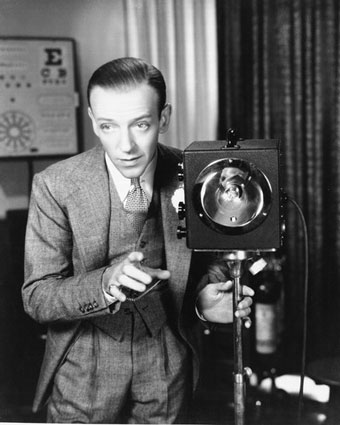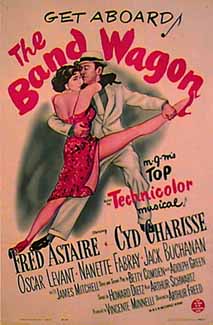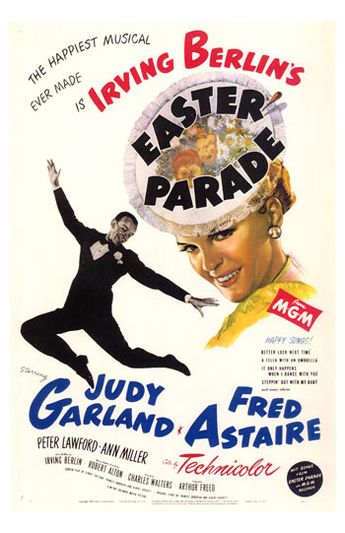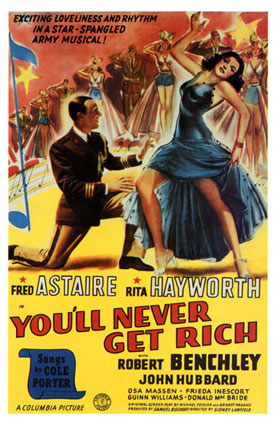

Fred Astaire was born Frederic Austerlitz Jr. on May 10th 1899 in Omaha, Nebraska.
Fred entered show business at the ago of 5 with his sister, Adele. They did both Broadway and vaudeville together up until 1932 when Adele retired to marry. Fred then moved on to Hollywood, signing a contract with RKO, but was on loan to MGM for his first film The Dancing Lady with Joan Crawford and Clark Gable.
His next film was Flying Down To Rio in which he was teamed up with Ginger Rogers for only one musical number. However, that started it all. Fred and Ginger stole the movie from the all-star cast and RKO then put the two of them in eight more RKO musicals in the 1930s. The two made their last RKO musical in 1939, The Story Of Vernon And Irene Castle, and they both moved on.

Fred then starred in a number of successful musicals over the next few years such as Holiday Inn, Easter Parade and Blue Skies. Fred temporary retired from 1945 to 1947 and started a chain of dancing schools. After Blue Skies was release in 1946, which included his most famous number Puttin' On The Ritz, New York's Paramount Theater made up a petition in which over 10,000 people signed to convince Fred to come out of retirement. Fred did, obviously, and made a string of successful musicals such as Royal Wedding, The Bandwagon and Silk Stockings up until 1957. Fred said he would never dance on screen again and only did straight man roles in both film and television. He did however, do a few steps with Gene Kelly in the film That's Entertainment! in 1974. Fred and Gene only made one real film together: Ziegfeld Follies in 1946. They had one number together: The Babbitt and the Bromide.
Fred passed away on June 22nd 1987 from pneumonia in Los Angeles, California. He married twice and had two children.
Fred Astaire is one of the few names you think of when you think of dancing. Gene Kelly is the only other dancer worthy of competing with that honor. Fred's image of a top hat, coattails and a cane is one of the most famous images in American cinema history. And that image is burned into the mind of ever person, American and so on. As long as that is true, Fred is always around, still inspiring.

1949 (22nd) * SPECIAL AWARD To Fred Astaire for his unique artistry and his contributions to the technique of musical pictures.
1974 (47th) ACTOR IN A SUPPORTING ROLE -- The Towering Inferno {"Harlee Claiborne"}



